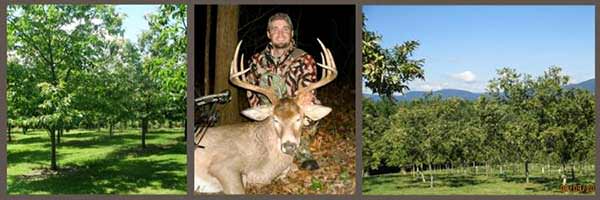

USA –-(Ammoland.com)- According to an on-going radio-collar study of deer movement by Penn State University, up to 25 percent of young does and 75 percent of young bucks leave the area where they were born, permanently dispersing, sometimes miles away, to find what will become their adult home range.
That behavior has profound implications for anyone managing deer habitat. Deer, especially does, are less likely to disperse from areas with good habitat. If those does do leave their habitat, they are more likely to be attracted to areas with an already established habitat. And everyone knows that come fall, bucks follow the does.
Therefore, in the long run, fall food sources play an important role in the carrying capacity of deer habitat. Planting Chestnut Hill fruit and nut trees as orchard “food plots” on your hunting land is the most economical way of improving fall food sources. Once established, the right mix of soft and hard mast trees will produce food that deer find both nutritious and extremely palatable.
Chestnut Hill produces hardy fruit trees in a number of varieties – with many types of apples, pears and persimmons that can be the foundation of wildlife orchards. A mix of these fruit trees can produce reliable and attractive soft mast for deer from August through early winter.
Chestnut Hill has varieties that are designed to thrive in just about every growing zone in the contiguous United States, so you can be sure you are getting a tree that will grow best on your land. Ripe apples, pears and persimmons will draw deer off of almost any other food source. Some deer will even bed near apple trees.
Chestnut Hill also sells Dunstan Chestnut trees – a blight resistant chestnut that annually produces chestnuts that deer prefer by a wide margin even over white oak acorns. Ultimately, chestnut trees are capable of producing more carbohydrates and more protein per acre than corn and acorns.
If you are interested in making a lasting improvement of your deer habitat, in a way that’s ultimately less expensive than traditional, annually planted food plots, it’s time you looked into Chestnut Hill fruit and chestnut trees.
You don’t have to be an expert orchardist, either. The folks at Chestnut Hill have that expertise and decades of experience helping land managers successfully establish stands of soft and hard mast trees that are right for specific habitats.
Get started by checking out their website at www.chestnuthilloutdoors.com
to see the options available to you, as well as article sand videos on planting and caring for fruit and chestnut trees.
